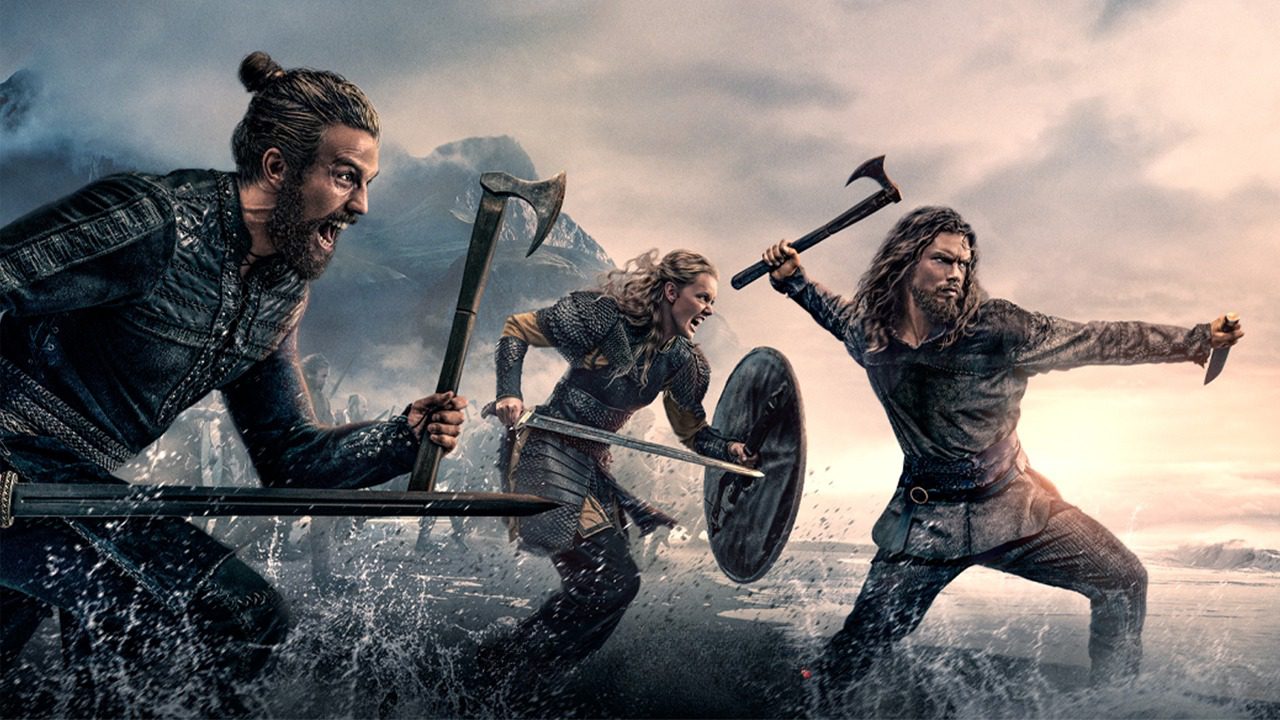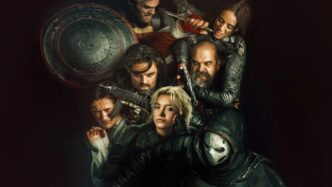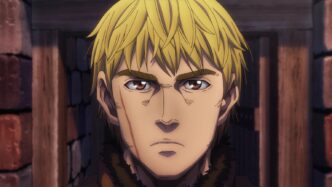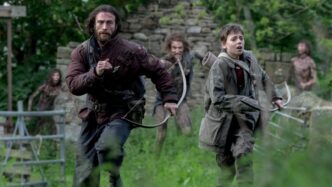You might have heard the terms parent company and subsidiaries, haven’t you? For those not involved in the corporate world, a subsidiary is a company that belongs to another company referred to as the parent company. An example may clarify any doubts. Think of History Channel’s original Vikings as the parent company and Netflix’s Vikings: Valhalla is its subsidiary. I know it is a Netflix original. There are new elements involved, and there are upgraded characters. However, the show is still on Vikings. So what is new? Times are different.
The story sets off 100 years after the original Vikings in the 11th century. The expeditions of Ragnar Lothbrok, Bjorn Ironside, Ivar the boneless, and other great warriors are now great tales of glory. The Northmen have settled in various portions across England. There is peace. However, King Aethelred II of England deemed the progress of Vikings as a threat to his empire. Hence, he ordered the St. Brice’s Day massacre. The extermination of every Viking residing in England. His weapons were treachery and deceit. One thing that we know about the Northmen is that they are vindictive. Vikings: Valhalla is a saga of vengeance.
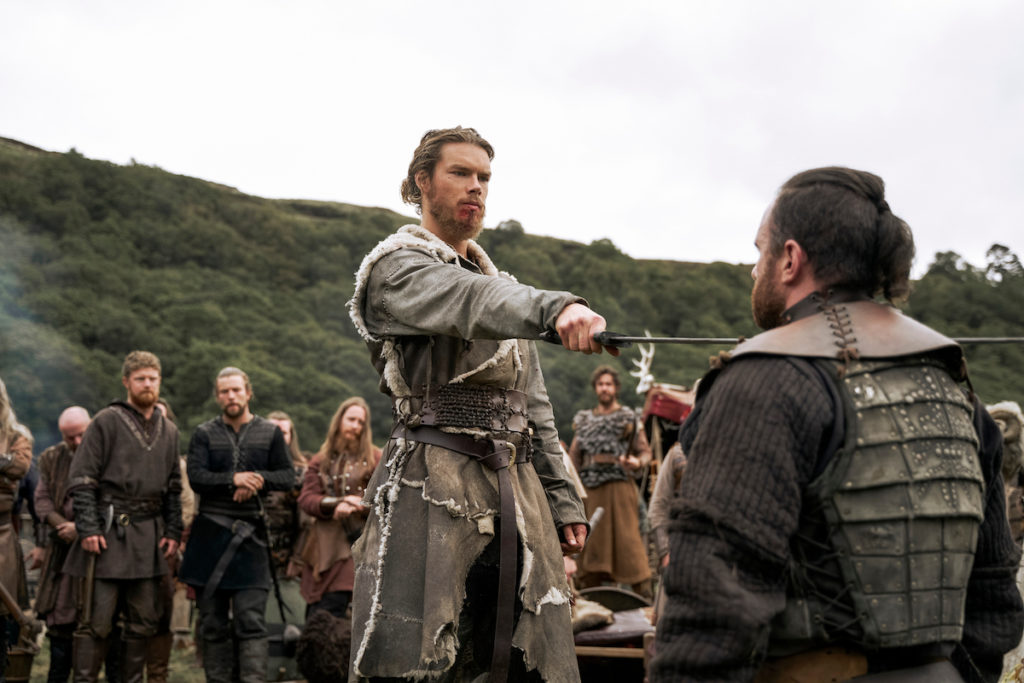
Valhalla is worlds apart from its predecessor. It lacks the original’s dark and grim touch. The original Vikings had a world that was an omen of inauspicious things. The world of Valhalla is just brighter. The transition in tone makes it easier for the viewers to grasp the change in 100 years. This minor detail also alludes that the old Norse ways are waning.
The action sequences are something the show can take pride in.
The fights are more gritty and gruesome. The first season contains two epic battle scenes that show intriguing strategies and savage performances. Richard Ryan, the stunt coordinator of Troy, the Dark Knight, and the original Vikings, has again shown us his ingenuity in choreographing fight sequences.
Furthermore, Valhalla’s storyline is atypical. The plot focuses on revenge. The revenge of not just the whole Viking community but also of a woman. I am not going to divulge much, but the writers were clever in writing the first episode. They diverted the viewers and maneuvered them in a new direction.
Apart from the plot, the show has some intense and incredible moments.
Leo Suter’s character Harald Sigurdsson brings a Viking charm to the show. His speech in the very first episode was compelling and charismatic. He is not just some mindless brute with an ax but a cunning, skilled warrior. His lack of prejudice sets him apart from other leaders.
His polar opposite is Sam Corlet’s Leif Erikson. Leif is a calm and reserved man with capabilities more than an average Viking. Leif could be an apt example of William Blake’s ‘A Poison Tree’. He soon becomes the exemplar of what repressed wrath can become. These two characters share some intense scenes throughout the season. Their brief dialogue at the end of episode 2 was chilling.
One of the other main characters of the series is Freydis Eriksdotter, played by Frida Gustavsson. She is Leif’s sister and a Greenlander. She is an ardent devout of the old gods. It’s perplexing how a character can be a combination of warmth and viciousness. She is an upgraded version of Lagertha. She is impulsive yet focused on her goal.
When we talk about powerful female performances, we cannot help mention Queen Emma, played by Laura Berlin. A resilient and astute strategist, Emma is one of the few characters on the English side that show promise.
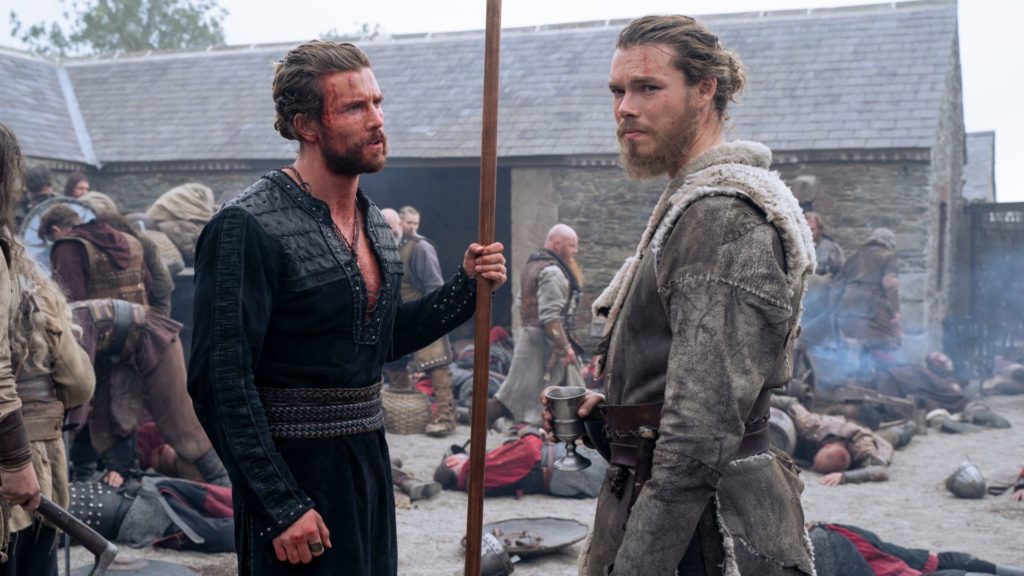
These were the good parts. Now let’s dive into the bad and ugly. Nobody can ignore the banalities this show has depicted. Leif is a brooding, reserved protagonist with wieldy burdens on his shoulders. Greenlanders are a faction of friends prepared to die for one another. Freydis is a character trying to figure out her destiny, and surprisingly her fate is to do great things. Then there is Olaf Haraldsson, an exceedingly ambitious King. We can observe these traits in other historical dramas as well.
The opening season leaves us blind with the characters Harald and King Canute. I could not fathom their true purpose or what could become of them. Canute did become a magnetic presence halfway through the season. The juxtaposition of Canute and his father, Sven Forkbeard, shows the disparity between the old and current Viking ideologies. Forkbeard is rash and brutal, whereas Canute is more understanding and clear-headed. However, the story does not focus much on Canute towards the end of the season.
When History Channel’s Vikings started in 2013, it had a singular perspective and voice. Michael Hirst wrote all 89 episodes of the show. However, Netflix’s Valhalla has a more traditional production house. 4 writers wrote the first season. Hence, the show is more diversified.
Nonetheless, Valhalla’s biggest obstacle is to step out of the shadow of its predecessor.
Vikings: Valhalla has brought new flavors to the Norse world. The characters are more animated. It is not just pride, egotism, or ambition that divides the Northmen. It is religion. The faction of Christian Vikings is expanding. Those that remain, believers of the old Gods, feel marginalized. The barrier existing between different Viking communities is more palpable. That brings us to a new facet of the series. Jarl Kare, a fanatic leader of an anti-Norse cult, makes a formidable seasonal boss.
For me, the former series presaged beginnings. How the conviction and adventures of a single man changed the course of history. That series described the emergence of Vikings. However, Vikings: Valhalla alludes to the end of this great community for me. How did the old Norse ways pass away? Netflix may answer this question in the subsequent seasons. It may pose new ones as well. The first season showed promise in terms of visual impact. However, it is too early to say the same about the plot or the character development. The dialogue “A tide is coming” is etched on my mind. I am intrigued to see what this tide brings for the show.
